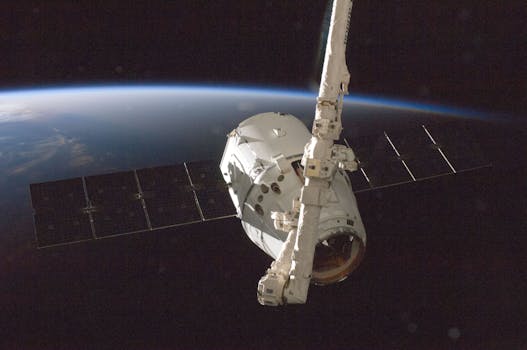
LEO Satellites Revolutionizing Global Connectivity – LEO Satellites
LEO satellites are at the forefront of a revolution in global connectivity, providing high-speed, low-latency internet access to even the most remote and underserved communities. By orbiting the Earth at an altitude of around 160 to 2,000 kilometers, LEO satellites can offer faster and more reliable connections than traditional geostationary satellites, which are stationed much farther away from our planet.
The use of LEO satellites is becoming increasingly popular, with many companies, such as SpaceX, Amazon, and OneWeb, investing heavily in the development of these systems. In fact, it is estimated that by 2025, there will be over 10,000 LEO satellites in orbit, providing global coverage and enabling a wide range of applications, from broadband internet access to IoT connectivity and Earth observation.
How LEO Satellites Work
LEO satellites work by orbiting the Earth in a low-altitude orbit, which allows them to communicate with Earth-based stations and other satellites more efficiently. They use advanced technologies, such as phased arrays and digital beamforming, to steer and shape their beams, providing high-gain and high-throughput communications. This enables them to deliver fast and reliable internet access, even in areas where traditional connectivity is limited or non-existent.
One of the key advantages of LEO satellites is their low latency, which is typically around 20-30 milliseconds. This is much faster than traditional geostationary satellites, which can have latency of up to 600 milliseconds. This makes LEO satellites ideal for applications that require real-time communication, such as video conferencing, online gaming, and remote healthcare.
Applications of LEO Satellites
LEO satellites have a wide range of applications, from broadband internet access to IoT connectivity and Earth observation. They can provide connectivity to remote and underserved communities, enabling them to access essential services such as healthcare, education, and financial services. They can also be used for disaster response and recovery, providing critical communications infrastructure in areas affected by natural disasters or conflicts.
Another key application of LEO satellites is IoT connectivity. They can provide low-power, low-cost connectivity to IoT devices, enabling them to communicate with the cloud and other devices in real-time. This can be used for a wide range of applications, from smart cities to industrial automation and logistics.
Challenges and Limitations of LEO Satellites
While LEO satellites offer many advantages, there are also some challenges and limitations to consider. One of the main challenges is the high cost of launching and operating a constellation of LEO satellites. This requires significant investment in infrastructure, including launch vehicles, ground stations, and network operations.
Another challenge is the risk of interference and congestion in the radio frequency spectrum. As the number of LEO satellites in orbit increases, there is a growing risk of interference between different systems, which can impact performance and reliability. To mitigate this risk, regulators and industry stakeholders are working to develop new standards and guidelines for the use of the radio frequency spectrum.
Conclusion
In conclusion, LEO satellites are revolutionizing global connectivity, providing high-speed, low-latency internet access to even the most remote and underserved communities. With their low altitude and advanced technologies, they offer faster and more reliable connections than traditional satellite systems, enabling a wide range of applications from broadband internet access to IoT connectivity and Earth observation. While there are challenges and limitations to consider, the potential benefits of LEO satellites make them an exciting and rapidly evolving field of technology.






